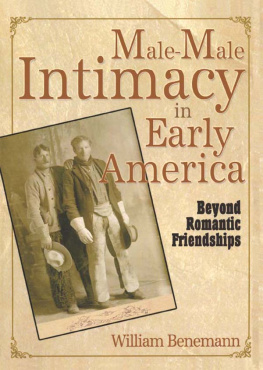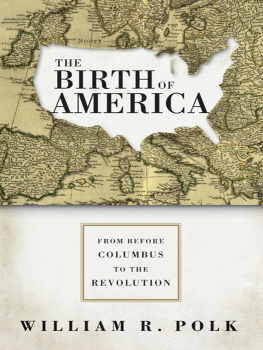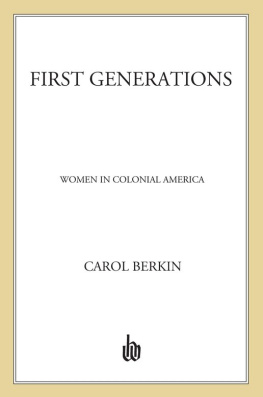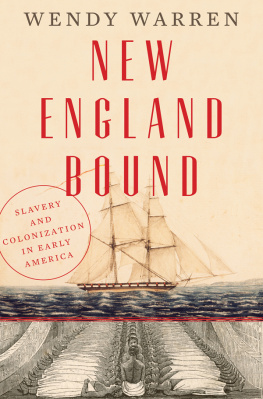Thank you for buying this ebook, published by NYU Press.
Sign up for our e-newsletters to receive information about forthcoming books, special discounts, and more!
Sign Up!
About NYU Press
A publisher of original scholarship since its founding in 1916, New York University Press Produces more than 100 new books each year, with a backlist of 3,000 titles in print. Working across the humanities and social sciences, NYU Press has award-winning lists in sociology, law, cultural and American studies, religion, American history, anthropology, politics, criminology, media and communication, literary studies, and psychology.
Long Before Stonewall
Long Before Stonewall
Histories of Same-Sex Sexuality in Early America
EDITED BY
Thomas A. Foster
with an Afterword by John DEmilio

NEW YORK UNIVERSITY PRESS
New York and London
www.nyupress.org
2007 by New York University
All rights reserved
Library of Congress Cataloging-in-Publication Data
Histories of same-sex sexuality in early America / edited by
Thomas A. Foster.
p. cm.
Includes bibliographical references and index.
ISBN-13: 978-0-8147-2749-2 (cloth : alk. paper)
ISBN-10: 0-8147-2749-2 (cloth : alk. paper)
ISBN-13: 978-0-8147-2750-8 (pbk. : alk. paper)
ISBN-10: 0-8147-2750-6 (pbk. : alk. paper)
1. HomosexualityUnited StatesHistory18th century. 2. Gays
United StatesHistory18th century. I. Foster, Thomas A.
HQ76.3. U5H57 2007
306.766097309033dc22 2007000134
New York University Press books are printed on acid-free paper, and their binding materials are chosen for strength and durability.
Manufactured in the United States of America
c 10 9 8 7 6 5 4 3 2 1
p 10 9 8 7 6 5 4 3 2 1
For Marlon
Acknowledgments
This project has been enormously gratifying to work on. I owe a debt of gratitude to the many people who helped along the way by offering suggestions for authors, pointing me to relevant essays, giving general advice, and sending emails of encouragement and expressions of enthusiasm for the project.
I thank the departments of history at the University of Miami, Rice University, and DePaul University for institutional support while I worked on the volume. In particular, I would like to thank Holly Grieves of DePaul University for scanning the reprinted articles to create electronic files. A grant from the University Research Council of DePaul University helped defray some of the production costs.
This book would never have been possible without the efforts of the contributors. I would also like to thank Debbie Gershenowitz who carefully guided and advised at every point.
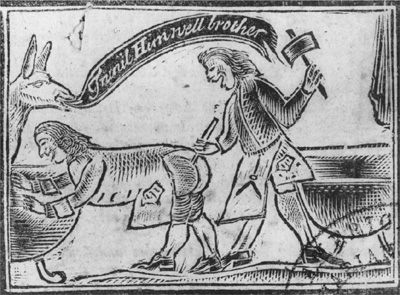
Introduction
Long Before Stonewall
Thomas A. Foster
In mid-eighteenth-century Massachusetts, the engraving featured on the cover and on the facing page, published in the Boston Evening Post, depicted the Freemasons of Boston engaged in anal penetration with a wooden spike or treenail. Treenails were commonly used in ship-building in the eighteenth century and joined timbers by becoming engorged when wet. Thus, the very object being used for penetration was a multilayered phallic symbol. The image also included the figure of an ass (furthering the anal emphasis) that brayed Trunnel him well, brother. A poem accompanied the engraving and depicted the Masons as romantically and sexually interested in one another. It only added to the focus on the phallus (note that the word trunnel was highlighted with capital letters) and the posterior with the lines: Im sure our TRUNNELS lookd as clean / As if they nere up Ase had been; / For when we use em, we take care / To wash em well, and give em Air, / Then lock em up in our own Chamber, / Ready to trunnel the next Member. Sodomy was, of course, still a capital crime in eighteenth-century Massachusetts, yet the story managed to muster humor about the act by calling on a cultural association of depraved and inferior manhood with same-sex sexual interest. That by the eighteenth century an all-male secret social club could raise the specter of homosexuality is significant. We might even speculate that the satirist was referencing molly houses of London, which were reported on in local newspapers.
Traditional scholars might argue that the engraving displays the scatological, not the sexual. But to draw too fine a line around the sexual limits our understanding of ways in which the erotic, romantic, intimate, reproductive, and physical join together with so-called nonsexual areas of life and society in early America. The anal intimacy depicted in the image necessarily raises the possibility of sodomy, enabling us to speak of same-sex sexuality without actually locating the term sodomy in this discussion.
This book, a collection of reprinted and original ground-breaking work, uses history, anthropology, psychology, literary criticism, political theory, and sociology to tease out various histories of same-sex sexualities in early America. Parts one and two chart the contours of same-sex sexuality in colonial societies, including interactions among Native Americans and Europeans. Parts three and four examine new meanings of same-sex sex in the early United States. Collectively, these essays demonstrate that long before the modern era, individuals came together to express their same-sex romantic and sexual attraction. Some reflected on their desires in quiet solitude. Some endured great hardship for their words or actions that expressed homosexual interest.
The eighteenth century in particular was a critical period in the development of traditions of sexuality. These languages and ideas around sex and personhood were only in the late nineteenth and early twentieth centuries officially enshrined in the professional terms of the then-relatively new fields of psychology and sexology. Long Before Stonewall exposes the deep foundations that modern sexual political movements and identities are built upon.
Reconceptualizing sexuality in preindustrial America has broader implications for our understanding of the development of the modern subject or self. Studying same-sex sexuality can also tell us something about life in early America, in particular something about connections of sex and reputation and character. Sexuality in early America was not as cordoned off into a realm of private behavior as it is today. The distinction between private and public was not so starkly drawn yet and therefore sex and sexuality affected more nonsexual arenas than has generally been understood. Indeed, the modern propensity to view sex as part of ones private life has led to its teleological absence from studies of public life. Early American society was agrarian and localized. Face-to-face interactions established ones personal reputation in the community. In colonial America, troublemakers always ran the risk of being pushed out or worse. But we should keep in mind that character and reputation were about more than simply being able to hold ones head high. The entire economic system, of both credit and household economies of barter, was based on character and reputation. In an era before depersonalized credit scores,
This general emphasis on character and reputation is familiar to students of early America. What is less well understood, however, is the extent to which personal behaviors regarding moral behaviors played an important role in establishing ones social and economic position. Taking into account sexual behaviors raises questions about the extent to which sexuality was part of that broader public reputation. It is within this context that a discussion of same-sex sexuality in early America must be situated.
Next page



